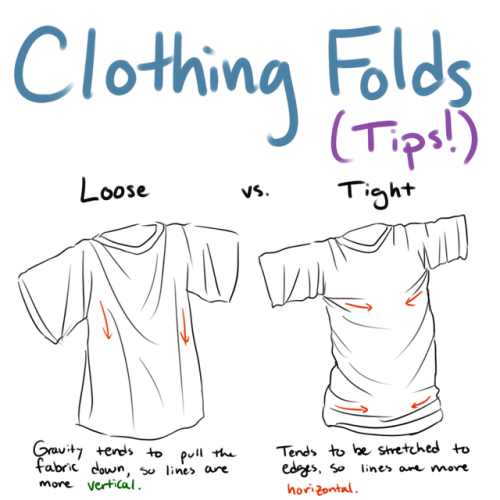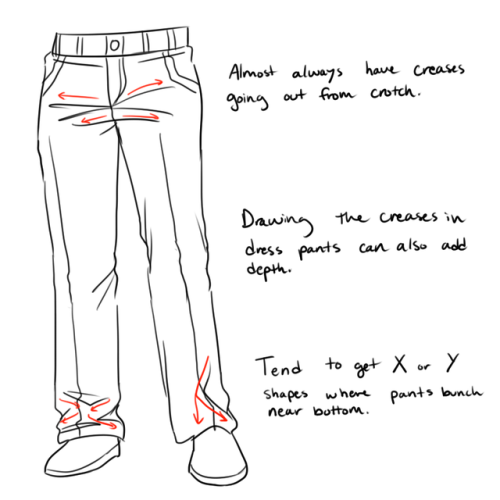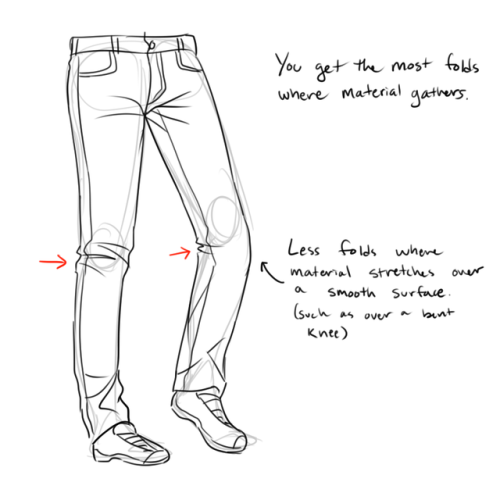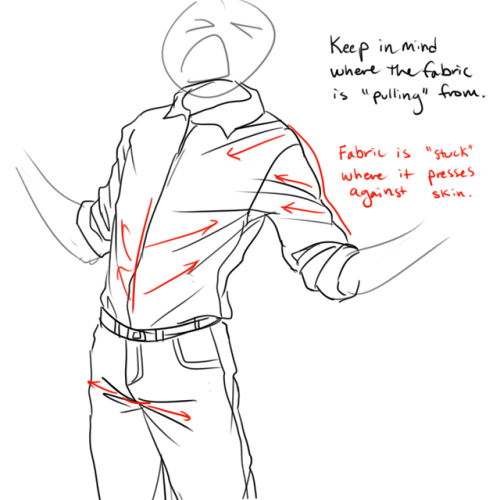Fold Tips - Tumblr Posts
quick tutorial on clothing folds for people with no idea how to draw clothing folds
so if, like me, you’ve done all the research on how clothing folds, and you have a decent idea how the physics works, but you just can’t get it to look right?
change all your lines into this

im serious

it makes everything look so much more natural

for added realism, just add random bumps to the line wherever you put one

and there you go!
(please dont judge me for my anatomy i drew this in five minutes)

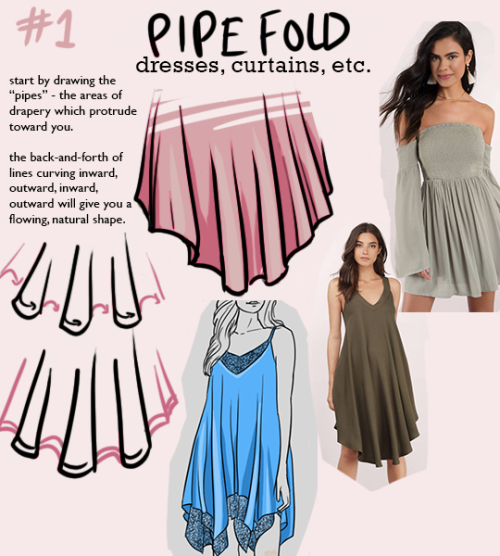
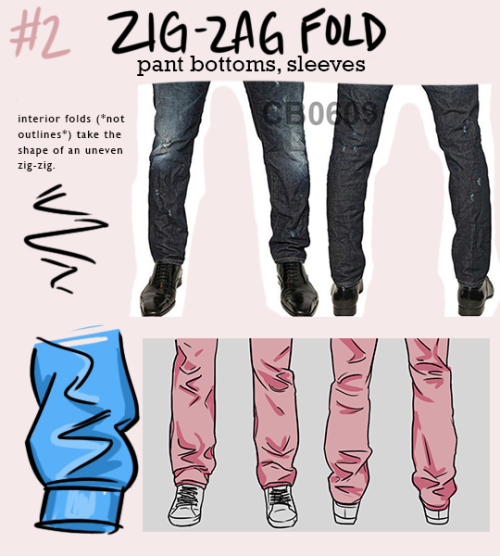
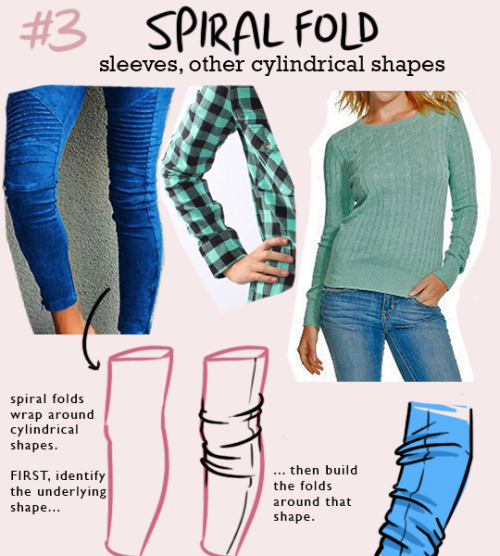

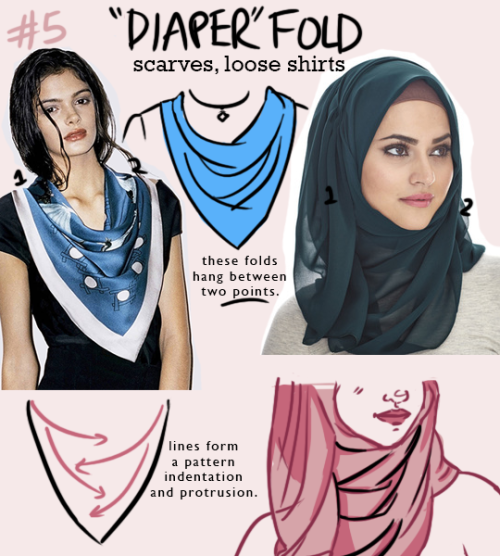
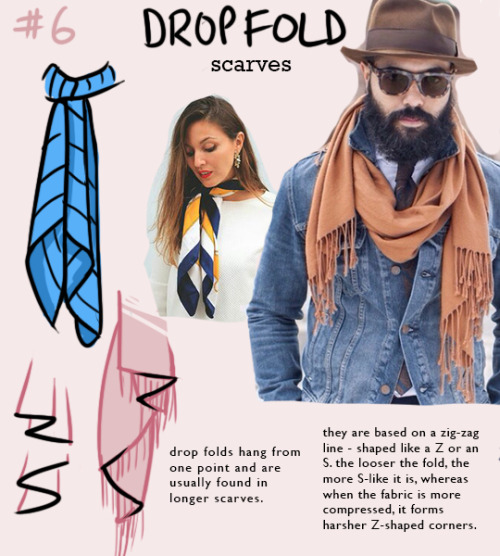
NOTE: one type of fold will rarely appear on its own - they interact with each other quite a bit! for example, spiral folds might define the outline of a pant leg, while the interior folds might be zig-zag folds.
i’m trying to re-learn how to draw clothing, so i made this little guide to the most common shapes of folds that appear. hope it helps someone else too!
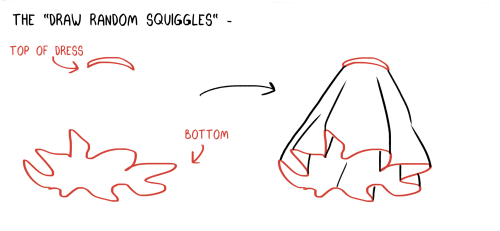
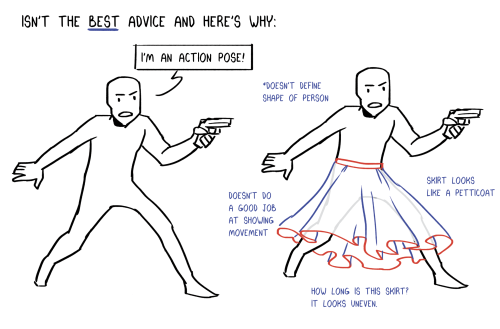
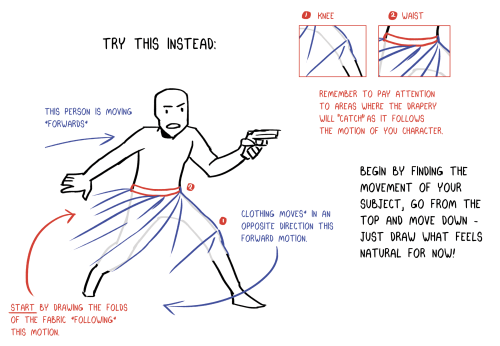
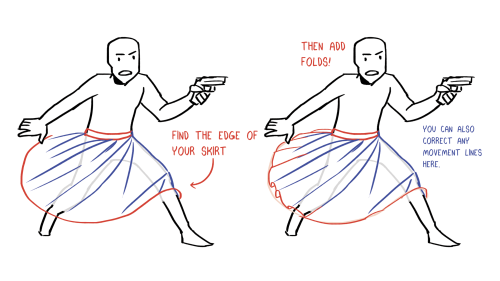
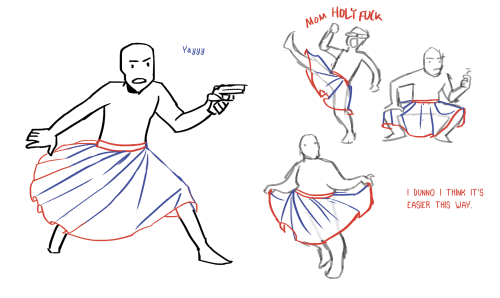
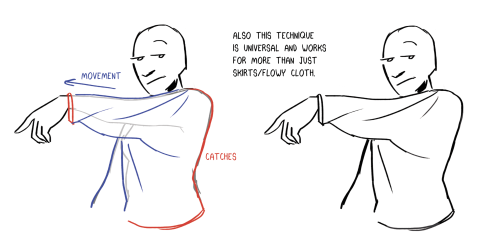
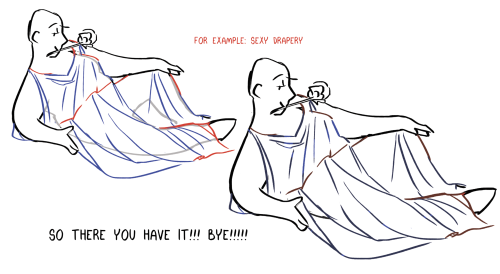
JUST SOME THOUGHTS! I don’t really like the “go from the top up” advice on drapery/clothes - if you’re having difficulty try it like this!
YES I see the typo… I’m so sorry folks… I was in a frenzied rush to make this…… and I’m too lazy to fix it……
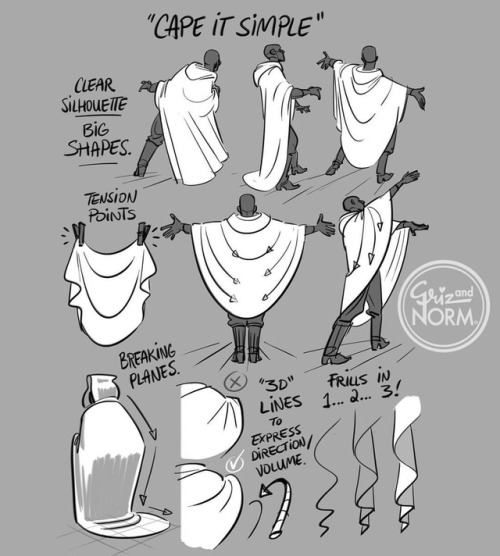
Tuesday Tips - Cape It Simple!
I don’t need to add too much explanation today. A cape, cloak or long coat simplifies the silhouette of most character, gives them a unique look or presence and conceals a lot of the overall anatomy. Keep track of the character underneath to know where to fold, drop or stretch the fabric. The fabric itself should play a role too. Different behave differently. Movement and gravity are key to “ground” your character in the environment and make it look believable. -Norm @grizandnorm #capeitsimple #100tuesdaytipsbook #100tuesdaytips #arttutorial #arttips

Thank you anon! l made some small examples of how l do folds and I’m going to try my best to explain it as best as l could.
When drawing clothing, it’s best to use a cylinder as a guide on how the fabric would look being wrapped around it. The folds of the fabric should be following the same direction of the cylinder’s form with round strokes. The first mistake from the example below, straight lines can takes away the form and leaves a flat unnatural feeling. Remember to think 3D!

Creases and folds should be drawn on tension areas, as in when the fabric gets tighten or fold together. Think of the direction on where the tension is going or coming from. The more tension there are, the longer and straighter the crease is. When the object bends, fabric tends to make a oval-ish looking hoops with overlapping folds (Do not over do them or it will look tedious).

There are more to it for drapery, this is just the basic idea of what to look out for when drawing clothing. BUT most important of all is USE REFERENCE!! I know it’s the most used excuse, but for sure use it because it will be super super helpful!
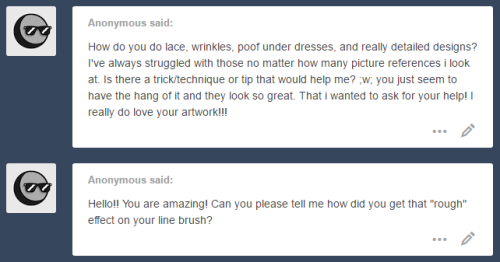
thank you both for such nice messages, I’m so glad you like my art…!! hopefully I can help at least a little bit! anon 2) my brush settings can be found here! anon 1) wrinkles can get pretty complex! it depends on the type, weight, thickness, and cut of the fabric, whether the character is in motion, etc; I wish I could get into everything, but it’s a huge subject that I don’t think I could possibly cover…!! but I can at least give you some very very basic tips on building up a dress (and the lace underneath!)

here are some examples of dresses I’ve drawn recently. they might seem complex, but when broken down to their most basic form, they’re actually very simple shapes that follow very similar rules!

are you seeing any patterns between them? while they do differ a bit, they’re by and large made from the same long line that curves into itself and back out. learning where this line goes and how it changes under different circumstances is learned largely through practice and intuition, but there are some steps you can take to begin building a foundation to work from! (or at least to sort of break down the process!)

determine the shape/angle of the dress itself. in this example, I’m using a big poofy dress shown from slightly below!
use this as a guide when adding that curving line from before. think of how the fabric folds, and keep in mind that the direction of the curve (and how harsh it appears) depends on where it falls on the dress and the angle at which it’s being viewed from. in this example, it’s more pronounced on the edges, and is facing different directions on the left and the right sides.
wherever cloth folds, wrinkles appear! wrinkles will be more abundant where the cloth is more compact; in this case, that’s toward the waistline. on a dress line this, a fold will originate at the waistline and radiate downward; this means that on an uninterrupted fold, the line that you draw should (if you were to continue it all the way, which is not always necessary) reach cleanly back to the waist. I added one translucent line to help illustrate this idea!
want to add a lace layer? it’s the same concept!! add your basic curving line underneath, keeping in mind that the cloth above will likely mirror whatever it’s falling over. (not perfectly, but somewhat!) so try to keep it a little consistent!
details are easy now!! you can add any sort of lace pattern you want by just tracing over that first line! I used a basic scallop shape here
want even more lace? just repeat step four as many times as you want underneath your last layer of lace!
once you get the hang of this part, figuring out more complex stuff gets much easier! I’m not great at explaining things, but hopefully you were able to come away with some kind of new information, haha…!! I’m wishing you both the best with your art!!!
